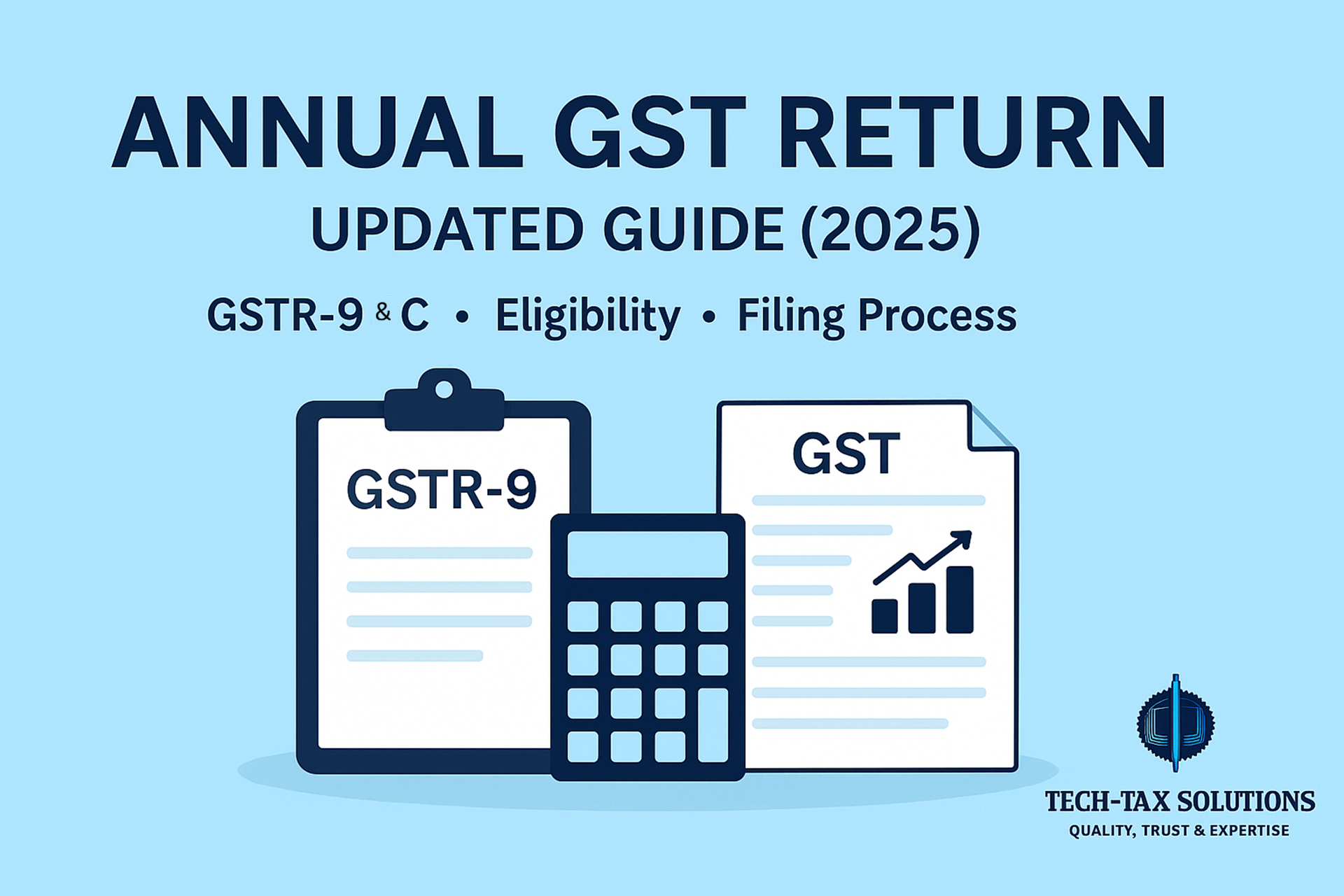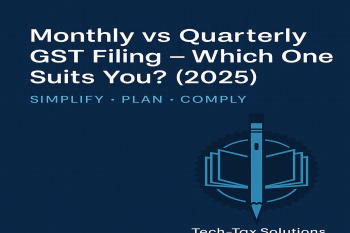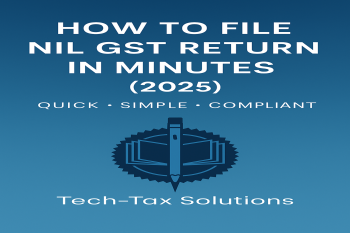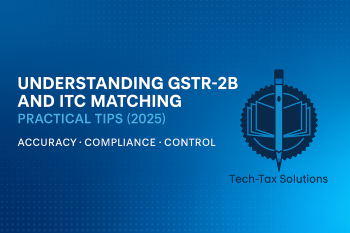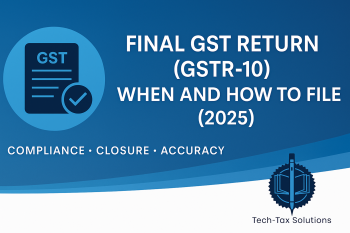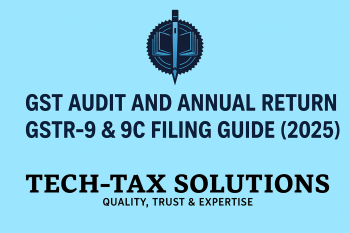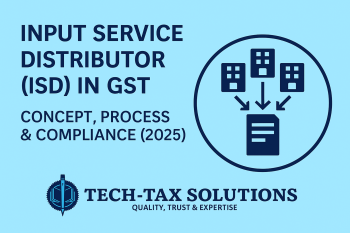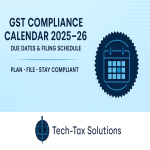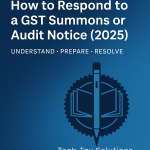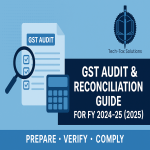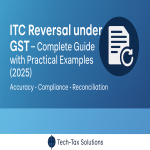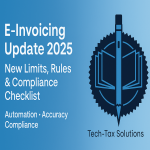🔹 Introduction
Every registered taxpayer under GST (except a few categories) must file an annual return to consolidate their yearly transactions. In 2025, the key annual return forms are GSTR-9 and GSTR-9C. Filing these correctly helps avoid notices, penalties, and ensures compliance.
This guide explains everything about GSTR-9 & GSTR-9C with the latest updates.
(References: Sec. 44 of CGST Act, Rule 80, CBIC Notifications up to 2025)
🔹 Who Needs to File?
-
GSTR-9: All regular taxpayers (turnover > ₹2 crore).
-
Optional GSTR-9: Turnover up to ₹2 crore (filing optional as per current relaxation).
-
Not required: Composition taxpayers (file GSTR-9A earlier, now withdrawn), casual taxable persons, non-resident taxable persons, ISD, TDS/TCS deductors.
-
GSTR-9C (Reconciliation Statement): Required for taxpayers with aggregate turnover > ₹5 crore (self-certified, no CA/CMA audit mandatory since FY 2020-21).
⚠️ Update FY 2024-25 onwards: Section 74A (new unified penalty provision) applies to annual return mismatches, replacing Sec. 73 & 74.
🔹 Due Dates
-
GSTR-9 & 9C: 31st December of following financial year.
(Example: FY 2024-25 → Due by 31st Dec 2025).
Late filing → Late fee + interest.
🔹 Structure of GSTR-9
Part I: Basic details (GSTIN, legal & trade name).
Part II: Details of outward & inward supplies (taxable, exempt, nil-rated).
Part III: ITC declared in returns & reversals.
Part IV: Tax paid (cash/credit ledger).
Part V: Amendments for previous FY.
Part VI: Other information (demands, refunds, HSN summary).
🔹 Structure of GSTR-9C
-
Part A (Reconciliation Statement):
-
Turnover as per audited financials vs GSTR-9.
-
Tax paid as per books vs GSTR-9.
-
ITC claimed as per books vs GSTR-9.
-
-
Part B (Certification): Self-certified by taxpayer (earlier by CA/CMA).
🔹 Step-by-Step Filing Process
📌 Step 1: Login to GST Portal
Navigate to Services → Returns → Annual Return.
📌 Step 2: Select Form
Choose GSTR-9 (and GSTR-9C if applicable).
📌 Step 3: Auto-populated Data
System pulls data from GSTR-1, GSTR-3B, and GSTR-2B.
📌 Step 4: Verify & Reconcile
-
Match turnover with books.
-
Match ITC with 2B & financial statements.
-
Verify taxes paid.
📌 Step 5: Enter Amendments (if any)
Report corrections related to previous FY.
📌 Step 6: Submit & File
Use DSC/EVC. ARN generated.
📌 Step 7: For GSTR-9C
Fill reconciliation statement online → Self-certify.
🔹 Common Mistakes to Avoid
-
Declaring wrong ITC figures not matching 2B.
-
Not reporting amendments for earlier FY.
-
Ignoring exempt & nil-rated supplies.
-
Filing late → Heavy late fees.
✅ Tip: Reconcile books vs returns vs 2B before filing.
🔹 Penalties & Late Fees
-
GSTR-9 late fee: ₹200 per day (₹100 CGST + ₹100 SGST), max 0.25% of turnover.
-
GSTR-9C: Penalty under Sec. 125 (general penalty up to ₹25,000).
-
Wrong reporting → Liabilities under Sec. 74A (effective FY 2024-25).
🔹 FAQs
Q1. Is GSTR-9 mandatory for turnover < ₹2 crore?
➡️ No, it is optional.
Q2. Is CA/CMA audit mandatory for GSTR-9C?
➡️ No, only self-certification required.
Q3. Can GSTR-9 be revised?
➡️ No, once filed cannot be revised.
Q4. Is ITC reversal required in GSTR-9?
➡️ Yes, if wrongly claimed earlier.
Q5. Do composition taxpayers file annual return?
➡️ No, GSTR-9A withdrawn.
🔹 Best Practices
-
✅ Start reconciliation early (don’t wait till Dec).
-
✅ Use 2B & books to cross-check ITC.
-
✅ Maintain HSN-wise data for reporting.
-
✅ Keep track of amendments from previous FY.
🔹 Conclusion
Annual returns (GSTR-9 & 9C) are the final compliance step each year. A careful reconciliation ensures no notices, penalties, or ITC loss. With Sec. 74A in effect, accuracy is more important than ever.
📌 Need expert help with reconciliation or GSTR-9C filing?
Contact Tech-Tax Solutions – Quality, Trust & Expertise in Ghaziabad, Noida & Delhi.
